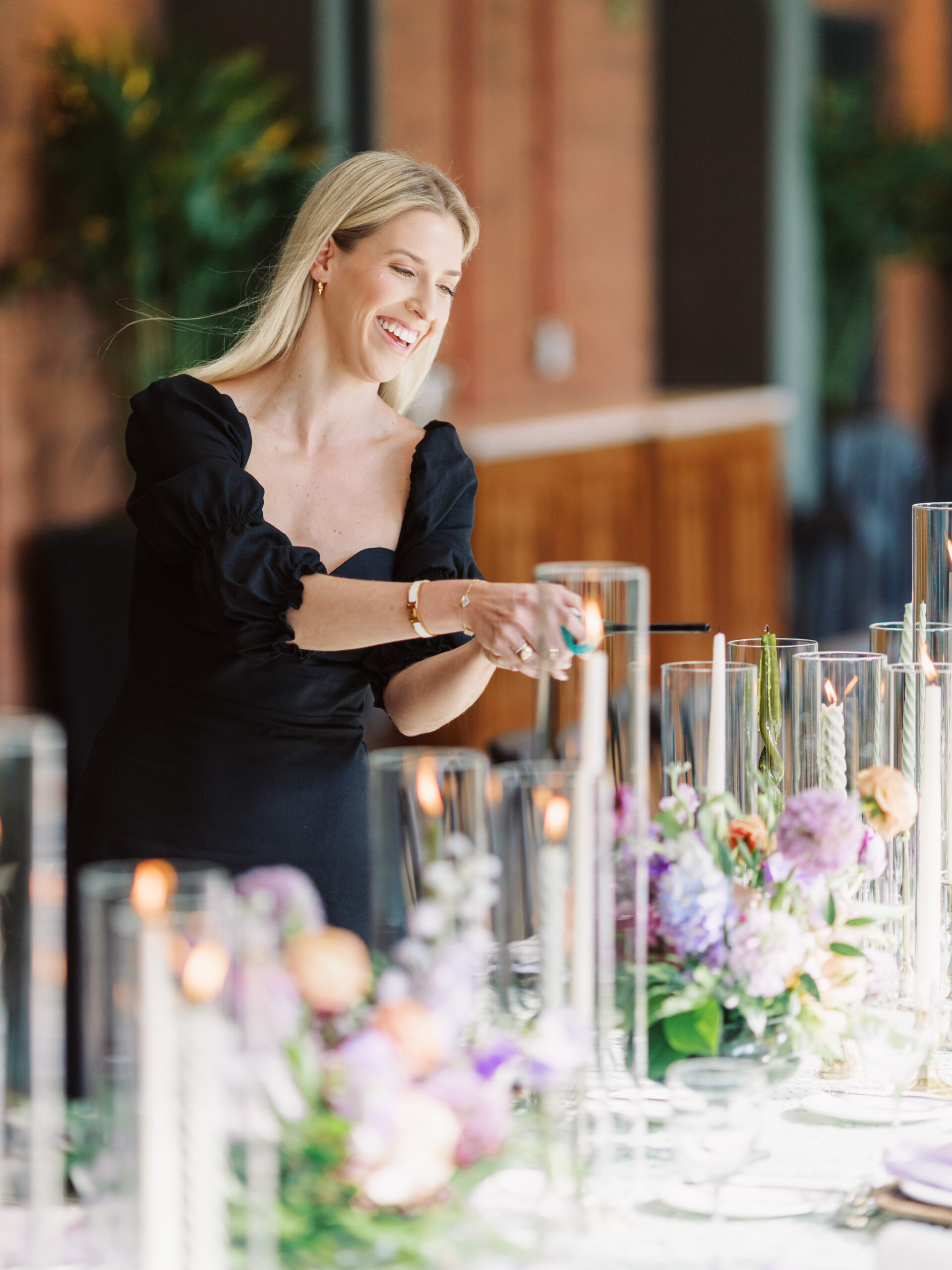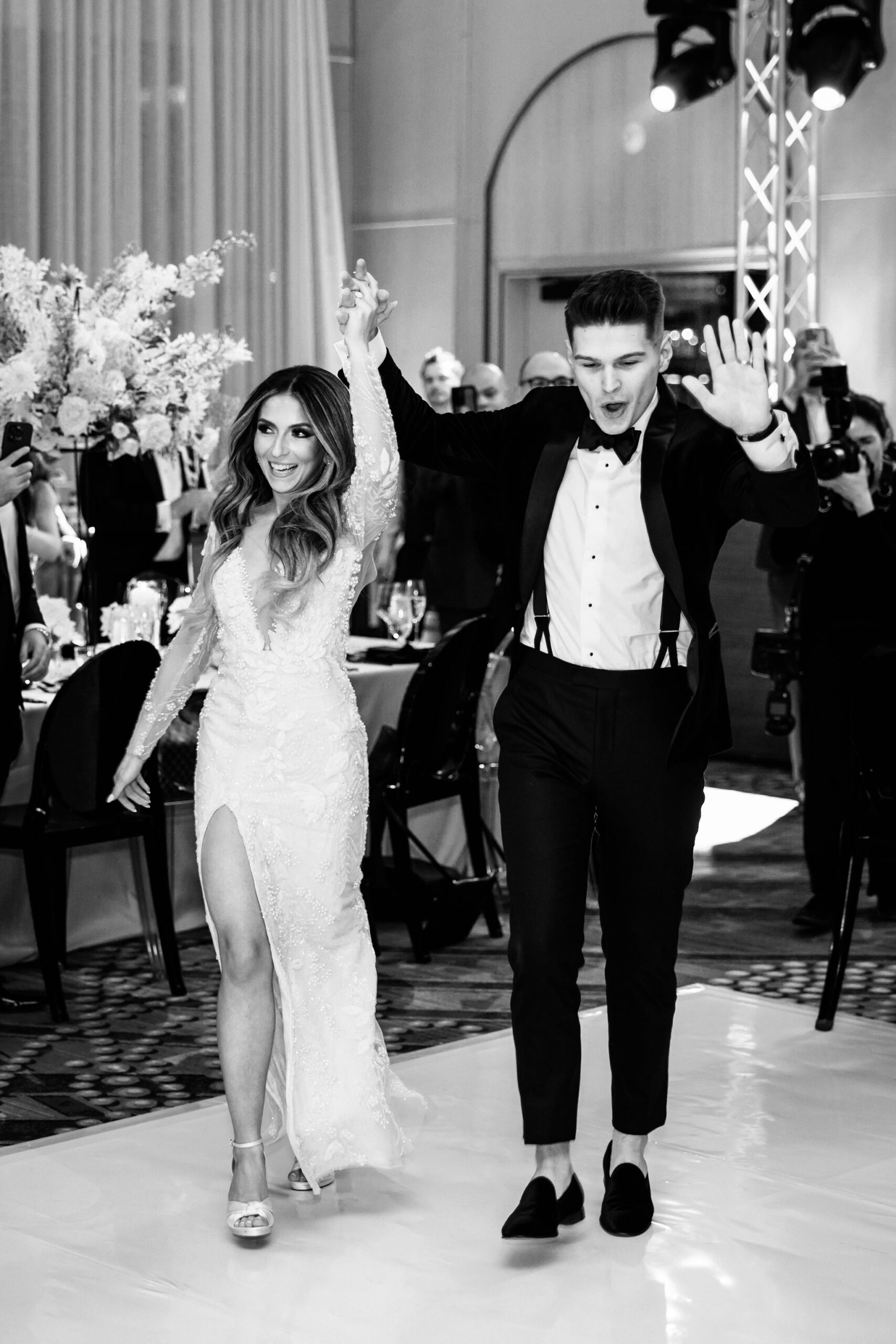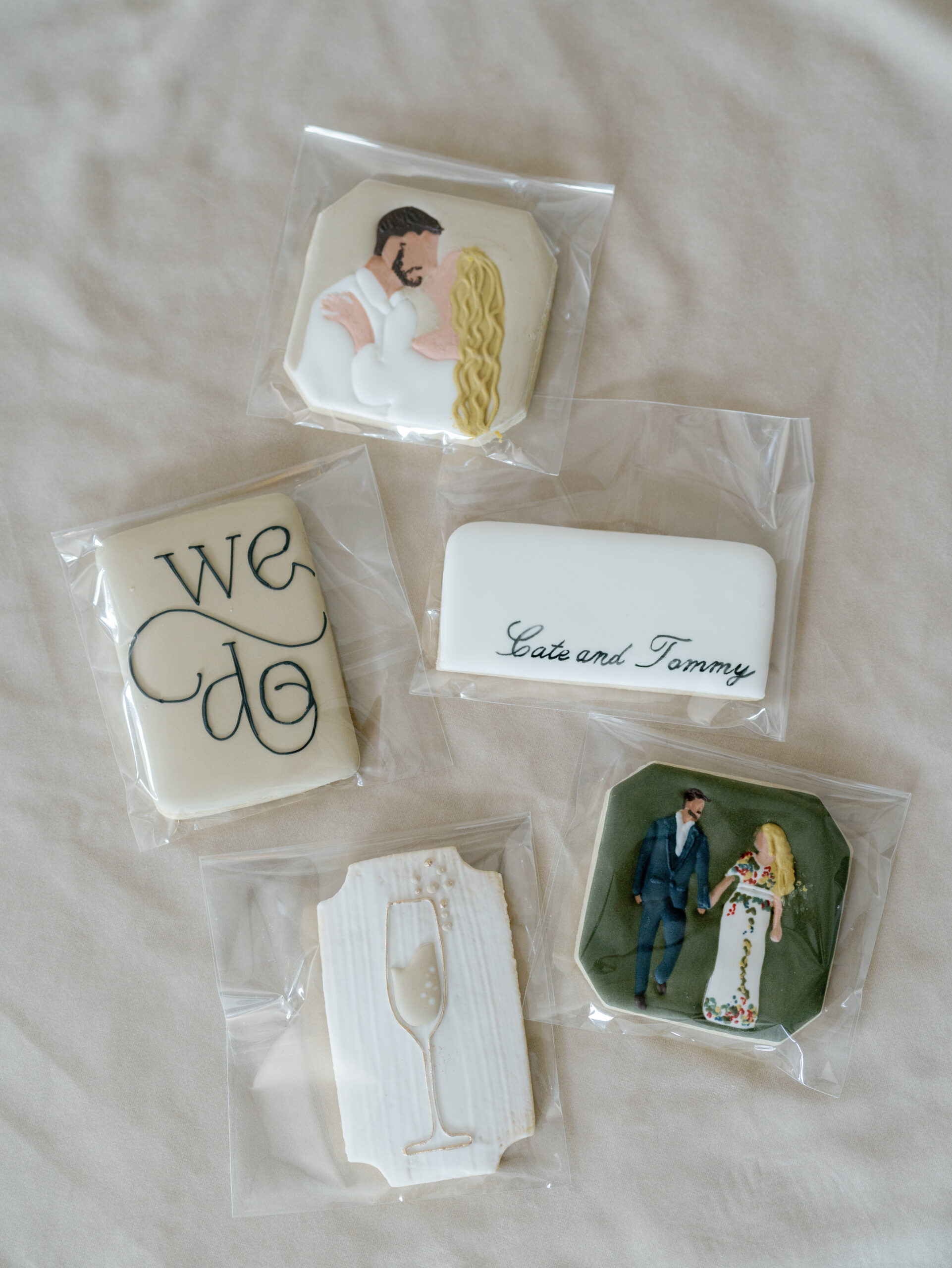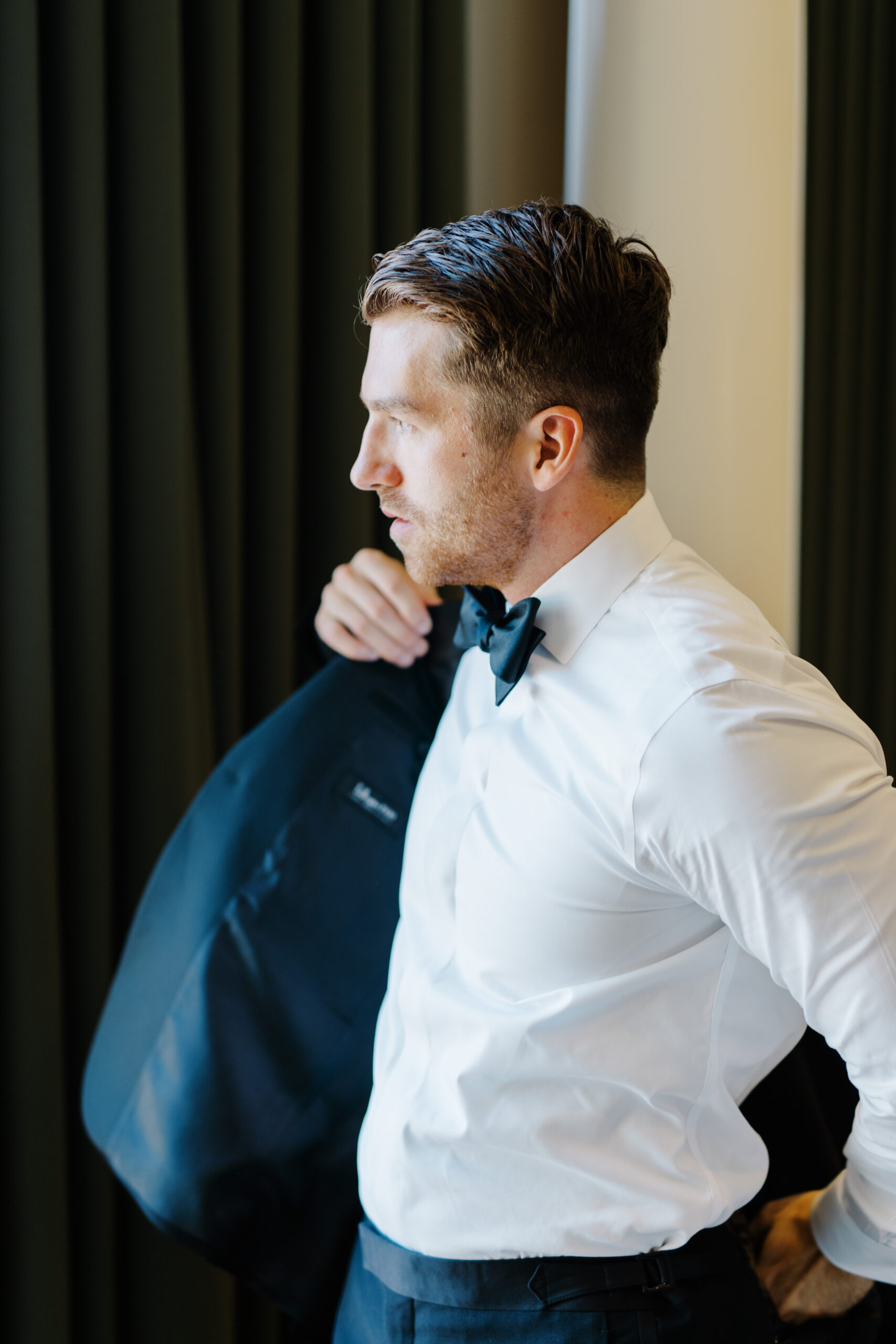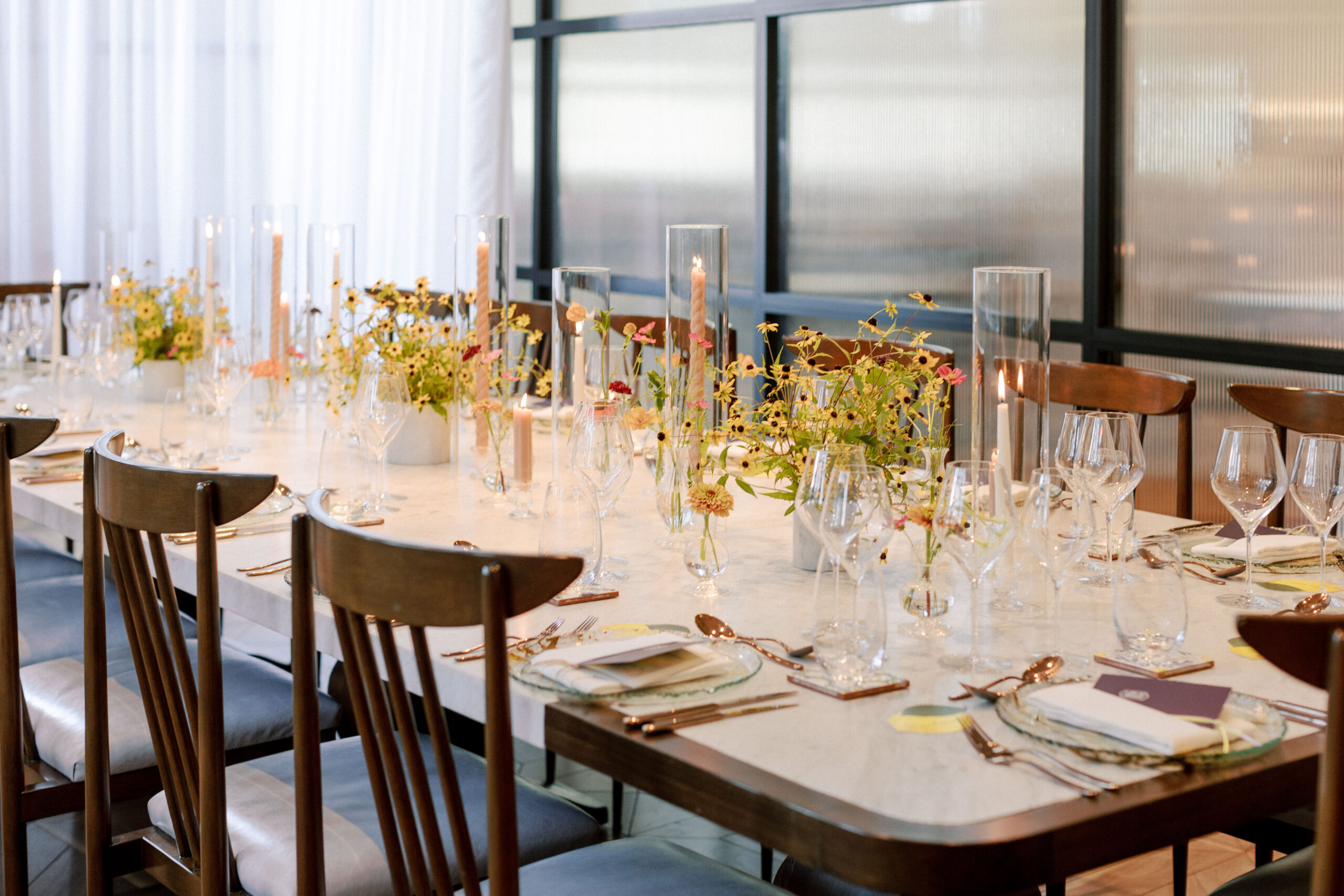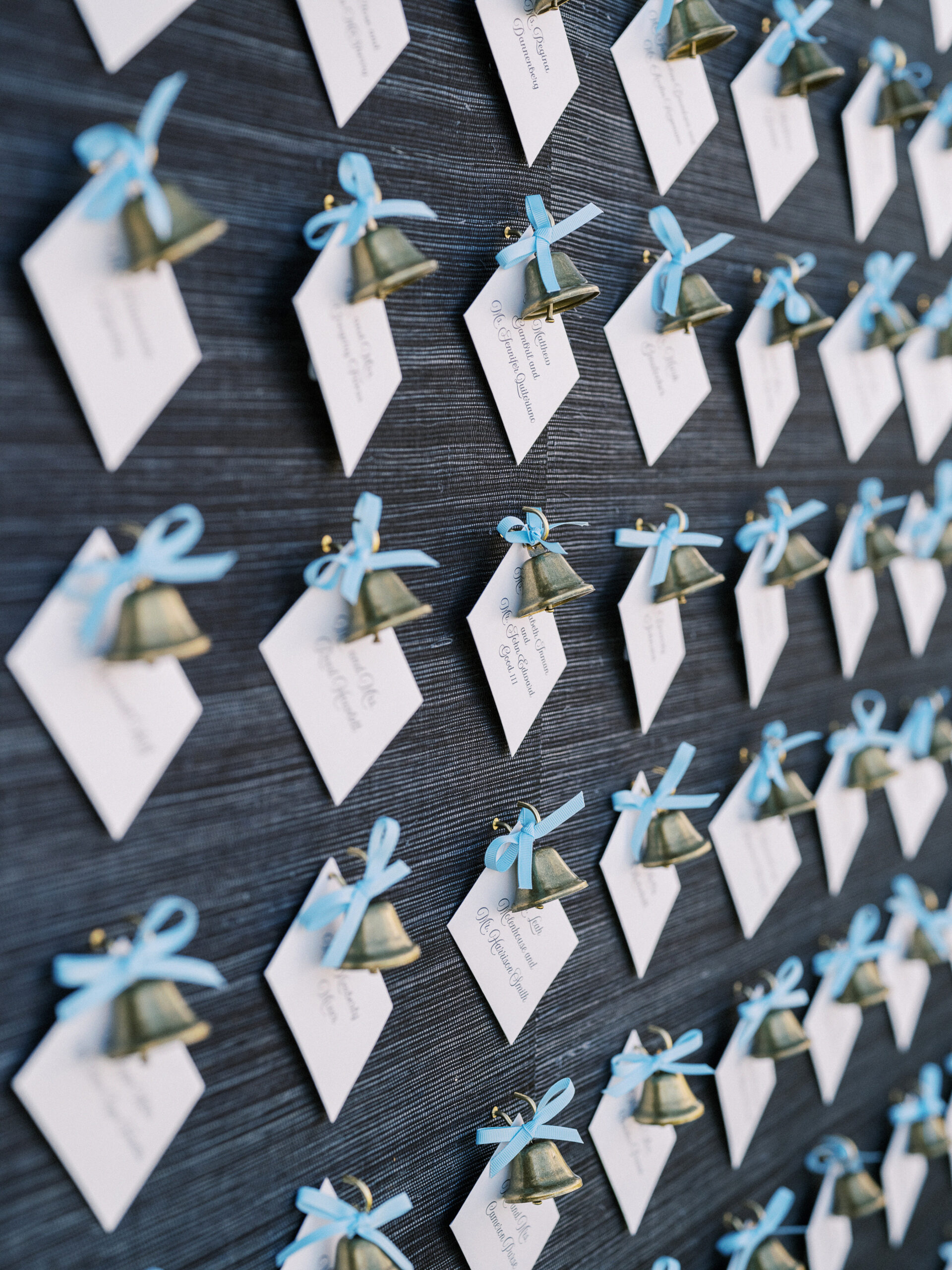Many areas of wedding planning require careful consideration: the number of guests, your venue of choice, the color palette – every detail counts. But one aspect, when done correctly, can transform your wedding from pure chaos to effortlessly chic.
At first glance, where people sit may not seem like a big deal. But, unless you’re having a small gathering, the seating arrangements can influence the overall atmosphere of your reception.
And, even if you’re having an intimate affair, proper seating arrangements can ensure your guests have a comfortable and enjoyable experience while celebrating your special day.
To help make this task easier, we’ve compiled a list of six tips and suggestions for assigning guests a seat at your wedding.
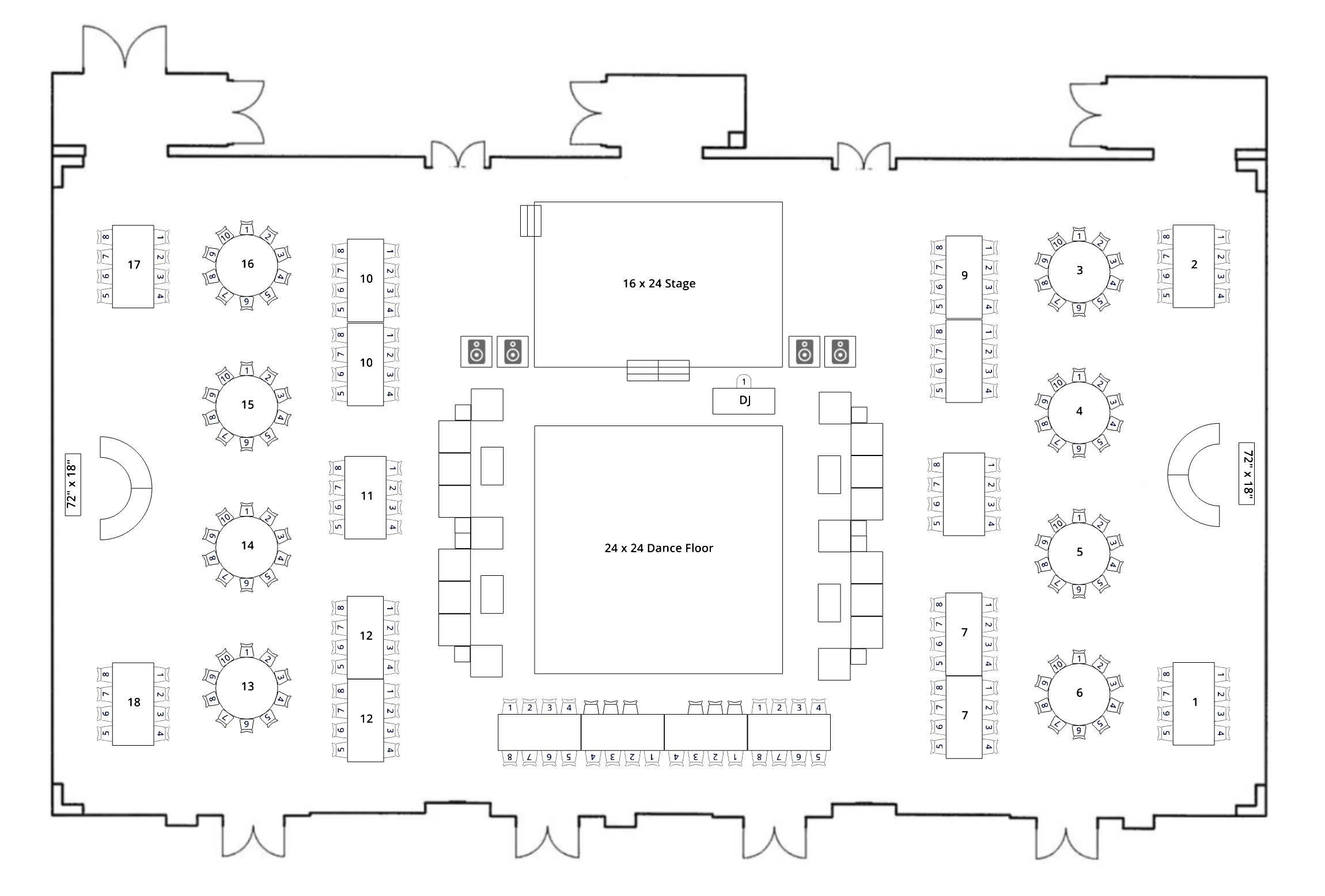
Start With a Seating Chart
It may seem obvious but it’s imperative to have an accurate, scaled, and clearly labeled seating chart. Before you begin assigning seats, having a clear visual of the reception layout is crucial. Create a seating chart to map out where each table will be located (in a logical and chronological order) and how many guests will be seated at each. This will help you determine how many guests can be accommodated at each table and ensure there is enough space for everyone.
Pro Tip: a lot of venues will try to cram too many people at a table to maximize the space. Below is our guide to maximizing space and guest comfortability:
- 72″ Round: 8-10 Guests
- 66″ Round: 6-8 Guests
- 60″ Round: 4-6 Guests
- Estate Tables: 2-2.5′ per guest x at least 48″ wide
If you’re working with us, we’ll provide the room diagram based on your final guest count. So, let’s say you begin with 230 people, but after receiving all of your RSVPs, the final count is 200. Before you begin assigning guests, we’ll readjust the diagram to allow for that number of people, provide a collaborative spreadsheet and software for easily assigning tables and seats – making things even easier for you!
Seat Guests Based on Relationships and Common Interests
Remember, you don’t have to incorporate certain things into your wedding just because your family or friends think you should!
There’s an art to putting together a great seating chart, one that ensures your guests have a wonderful experience. So be mindful of who’s who at each table because a night of inspired conversation and fun interaction often comes down to whom you’re sitting next to.
For example, putting two gentlemen together who love skiing or expertly placing your old college roommates next to each other is sure to spark lively conversation! So, try to place people who know each other or have common interests next to one another. This will help create a comfortable and enjoyable atmosphere for everyone.
On the other hand, and this may seem obvious, avoid seating guests who may not get along at the same table. Instead, consider family dynamics and any conflicts that may be at play – and steer clear of discomfort and tension.
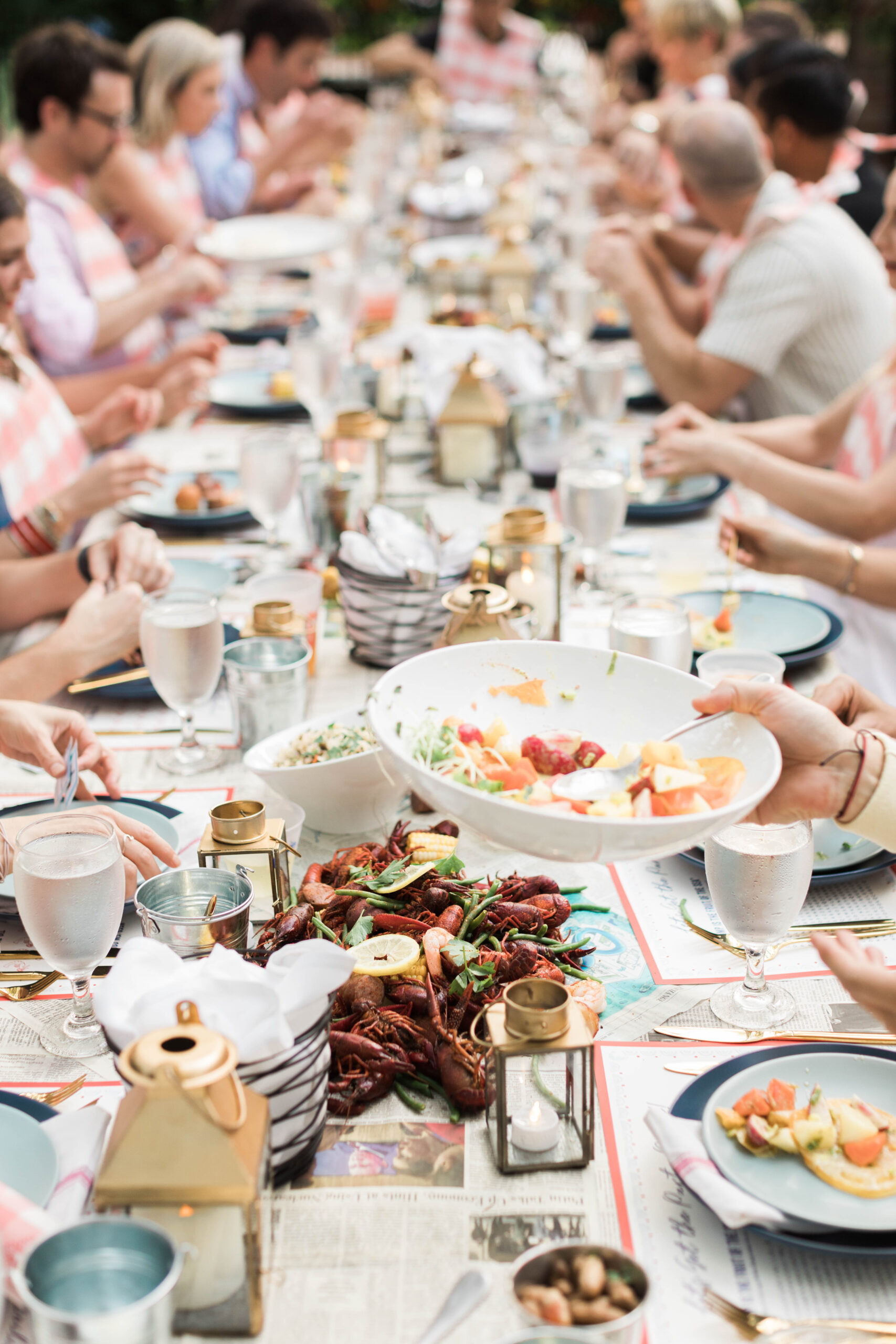
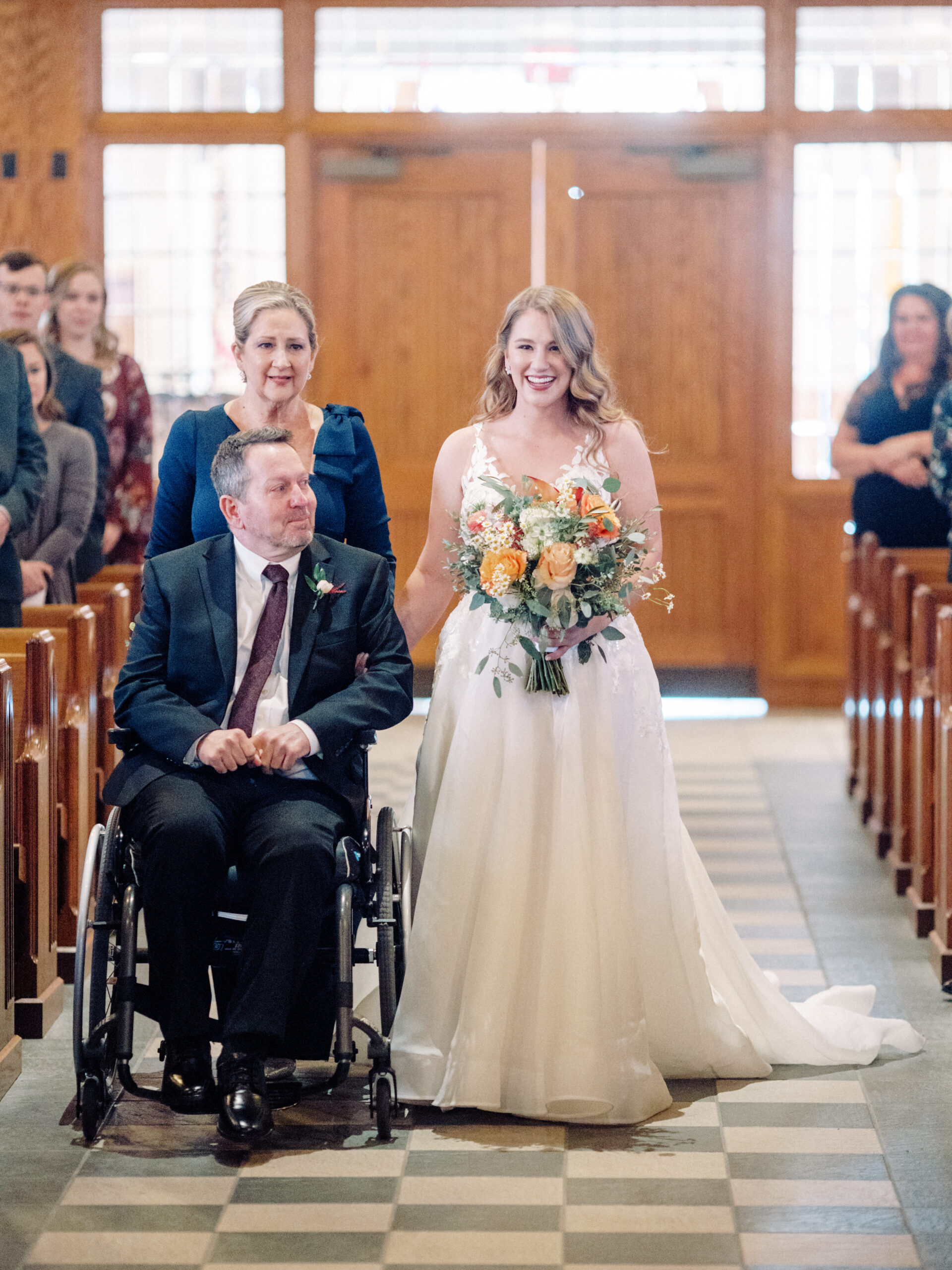
Consider Guests’ Needs
Look at the room from an aerial perspective. Who’s close to the bar (and maybe shouldn’t be)? Do you have elderly or disabled guests who need to be seated closer to the restrooms or entrance? And where are the speakers located and how many are there?
Pro Tip: having more speakers perfectly placed throughout the room allows for a more comfortable sound level overall. A big mistake we see inexperienced entertainment companies make is only having two speakers on the stage. The result? Incredibly loud sound in that one place and hard to hear toasts in the corners.
When we lay out a room, we typically set up six speakers. But when we’re not involved in that process, we often see only two speakers, and they’re usually right next to the stage. In that location, we have to turn them up loud enough so the people in the back can hear. In this scenario, you probably don’t want to put older guests, who are sensitive to sound, close to those speakers.
Place Guests Strategically for Important Moments
There are certain moments during a wedding reception that require strategic seating arrangements. For example, make sure both sets of parents are close enough so that they can see you cut the cake and have your first dance. This will also make it easier for them to participate in the wedding speeches and toasts.
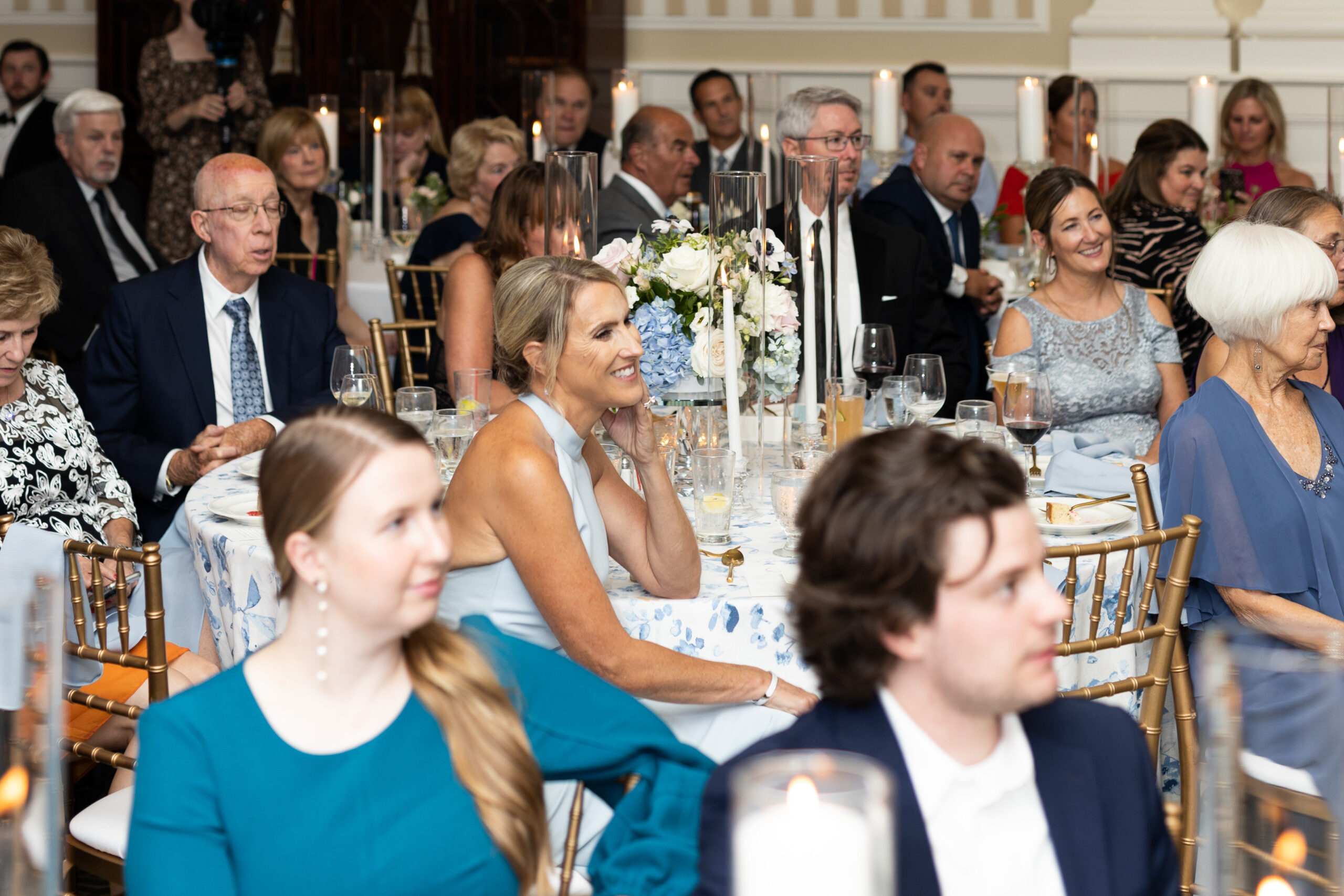
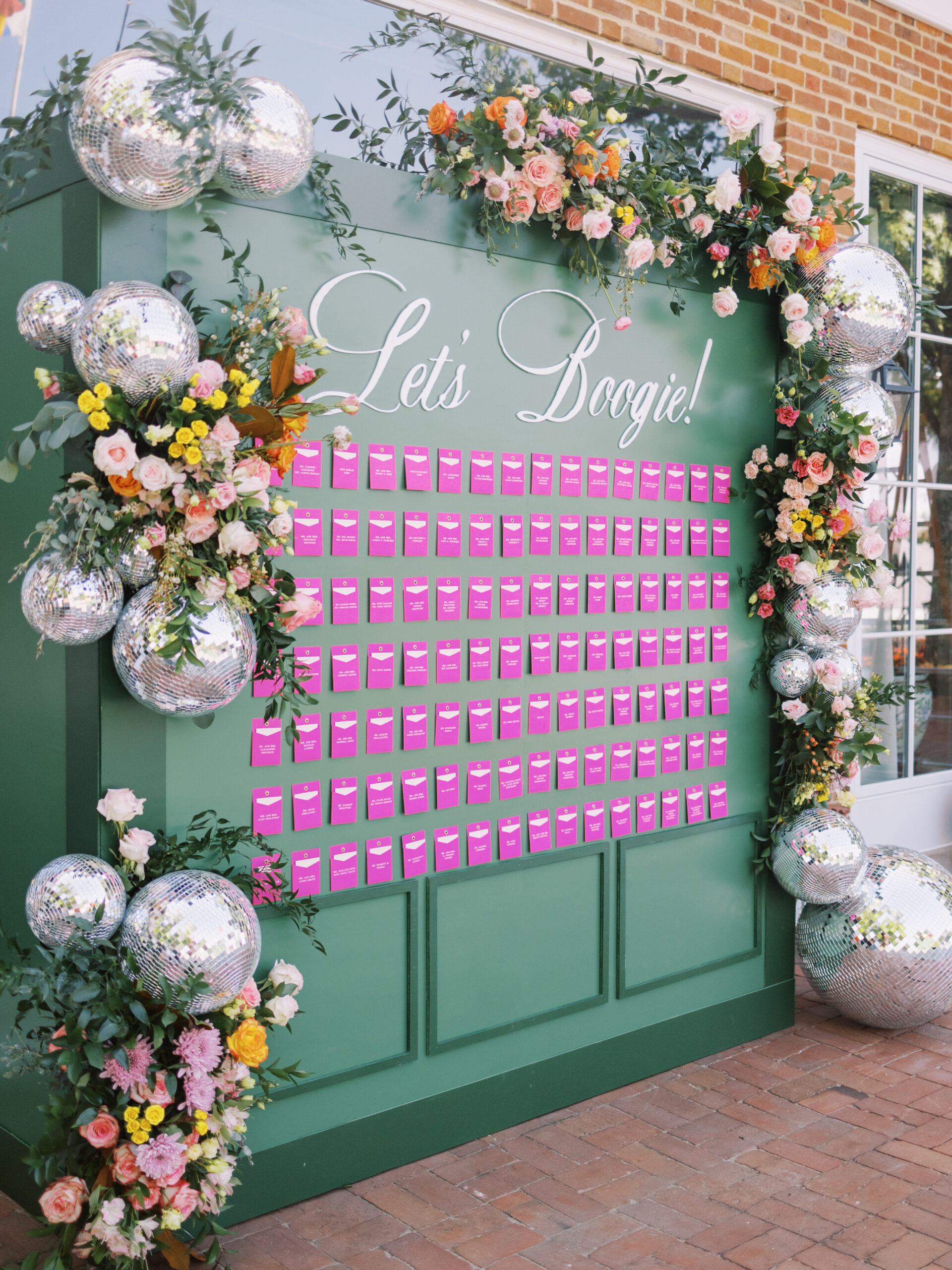
Provide Clear Seating Assignments
Once you know where your guests are sitting, it’s essential to let them know by providing clear seating assignments. This requires an understanding of the difference between an escort card and a place card.
- Escort Card: assigns (or escorts) guests to a table
- Place Card: assigns guests to a seat (or place)
Escort cards escort you to a table and place cards place you at a seat.
The best planners provide kitchen and table reports to your catering teams to ensure a seamless service. We’ll go through each table with the service team at their line up and ask each server to walk through and clearly “mark” (server lingo for understanding the meal selections) each table. This avoids the dreaded food auction when the entrees are presented.
We don’t recommend combining escort and place cards because it can make it challenging for the kitchen to ensure everyone gets the appropriate meal. Most guests place these in their pocket, forgetting to put them at the top of the table as the sit down and doesn’t set the service team up for success allowing them to “mark” their tables in advance.
Instead, have your escort card display set up at cocktail hour so that each guest can pick hers up and see that she’s sitting at Table 10. Then, when she gets to Table 10, set a place card for her, so she knows precisely where to sit.
Pro Tip: if you’re working with a stationery firm (yes, it’s with an E and not an A) that can handle variable data, personalize the menu to each guest. Rather than listing all entree choices on the menu do three different menus with three different copies so when Ms. Doe sits down her menu reads exactly what she orders! This helps as it’s not likely she remembers what she RSVP’d for weeks ago and helps to avoid the order envy and guests asking to adjust their selection.
From there, we suggest collaborating with your planner and caterer on meal selection indicators. These are typically symbols on the place card that…you guessed it…indicate which meal a guest prefers. While some do a simple cow icon for beef, carrot icon for vegetable, and fish icon for fish we prefer to be a bit more creative!
Be Prepared for Last-Minute Changes
Finally, prepare yourself for last-minute changes to the seating arrangements. This might mean a whole family has to cancel (I still remember all 11 people who were a no-show to our wedding!) or a couple unexpectedly gets time off and can happily make it. Stay flexible and ready to adjust your seating arrangements as needed.
Pro Tip: Consider an Escort Card envelope and insert combination. They can be beautifully displayed on any wall format or propped up on a table but can easily be switched around for last-minute adjustments. Simply remove one insert and replace with another and voilà – guests have no idea five-minutes earlier they were at a different table!
And remember, with us as your wedding planners, you won’t have to worry about such things. We’ll help you sort through the details and ensure every seat is perfectly matched. Contact us today and let’s get started!
